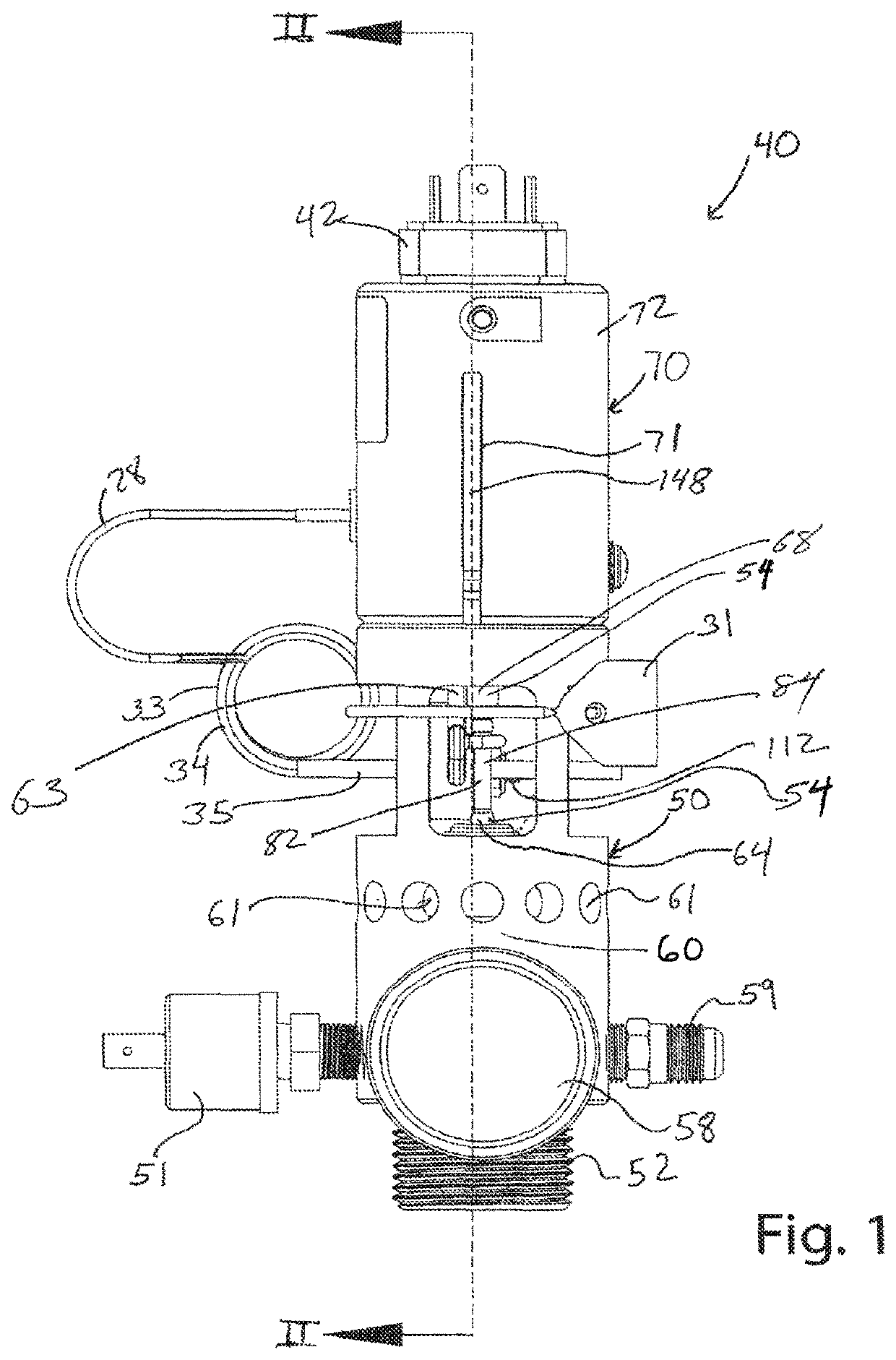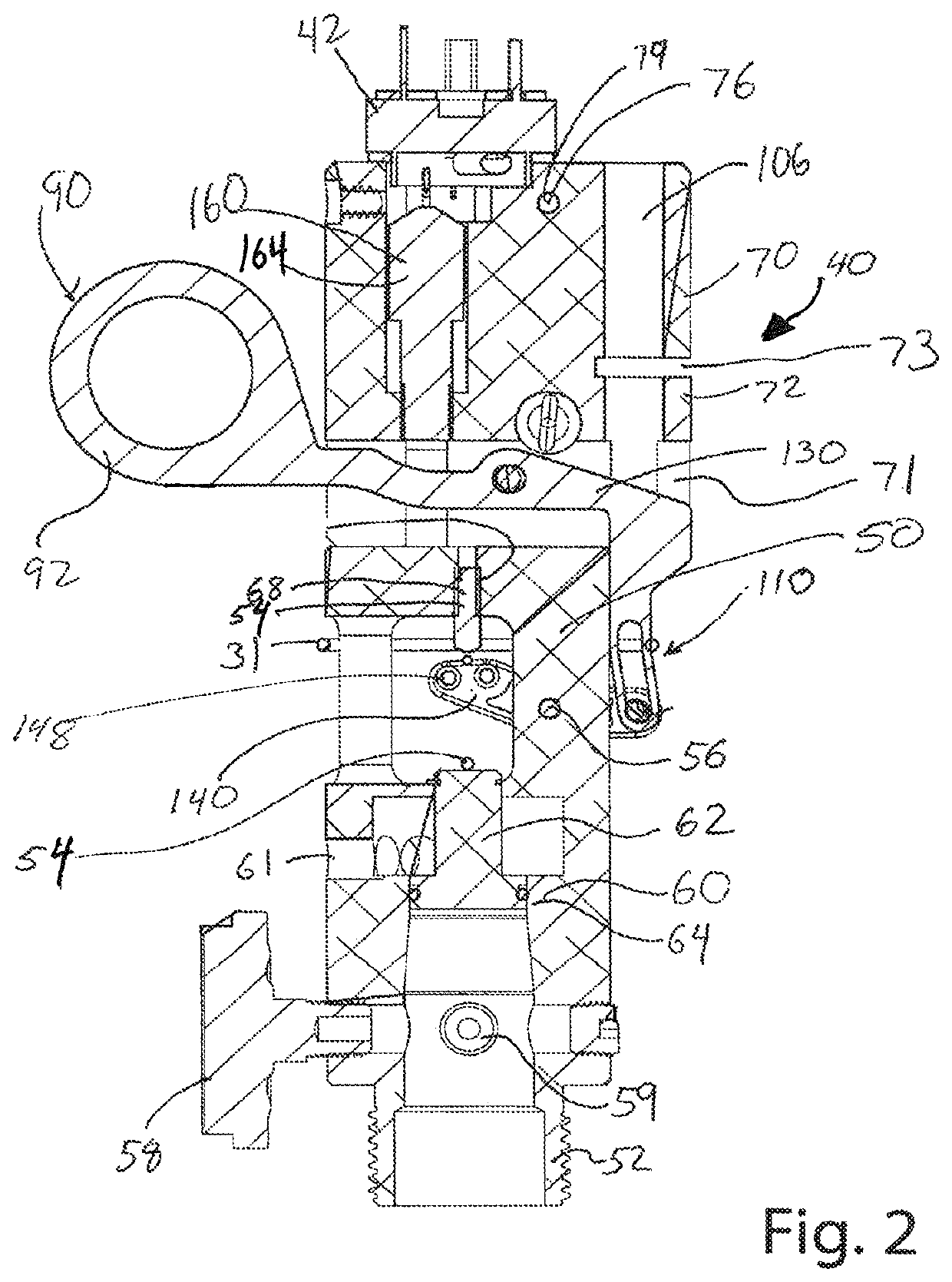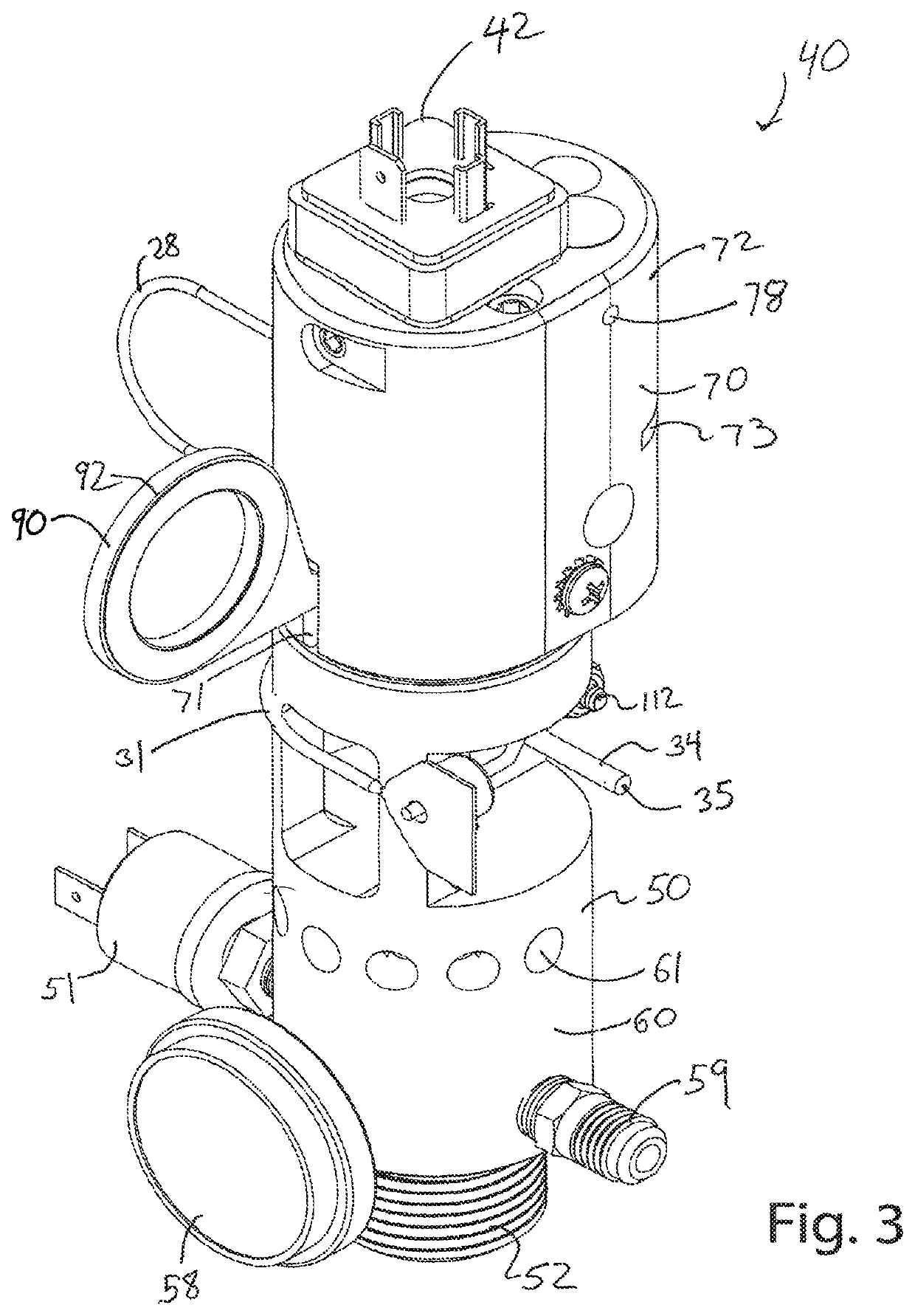Dynamic fire suppression system and method i'hereof
a fire suppression system and dynamic technology, applied in the field of actuators, can solve the problems of general cost of design and installation, complex design and installation of engineered systems, and general limitation of engineered fire suppression systems to larger facilities, and achieve the effect of cost effectiv
- Summary
- Abstract
- Description
- Claims
- Application Information
AI Technical Summary
Benefits of technology
Problems solved by technology
Method used
Image
Examples
Embodiment Construction
[0072]The invention provides a pre-engineered dynamic fire suppression system 20 that includes at least one fire extinguishing unit or device 30 in communication with a control panel 150 and at least one sensor 180 in communication with the control panel 18. Each fire extinguishing unit 30 includes an actuation device 40, having an actuation portion 90 and a valve portion 50, and a tank 32 capable of containing pressurized contents or material.
[0073]The tank 32 may be any type of tank commonly used to hold pressurized contents in the fire extinguishing industry. The size may vary, and commonly used in fire suppression systems are 25 cubic foot to 1500 cubic foot tanks, depending on numerous factors determined when designing the desired system 20. The contents of the tank 32 of the subject invention could be one or more fluids, dry chemicals, or the like. For a non-exhaustive list, these contents could include pressurized water, carbon dioxide, dry chemicals, ammonium phosphate, sodi...
PUM
 Login to View More
Login to View More Abstract
Description
Claims
Application Information
 Login to View More
Login to View More - R&D
- Intellectual Property
- Life Sciences
- Materials
- Tech Scout
- Unparalleled Data Quality
- Higher Quality Content
- 60% Fewer Hallucinations
Browse by: Latest US Patents, China's latest patents, Technical Efficacy Thesaurus, Application Domain, Technology Topic, Popular Technical Reports.
© 2025 PatSnap. All rights reserved.Legal|Privacy policy|Modern Slavery Act Transparency Statement|Sitemap|About US| Contact US: help@patsnap.com



